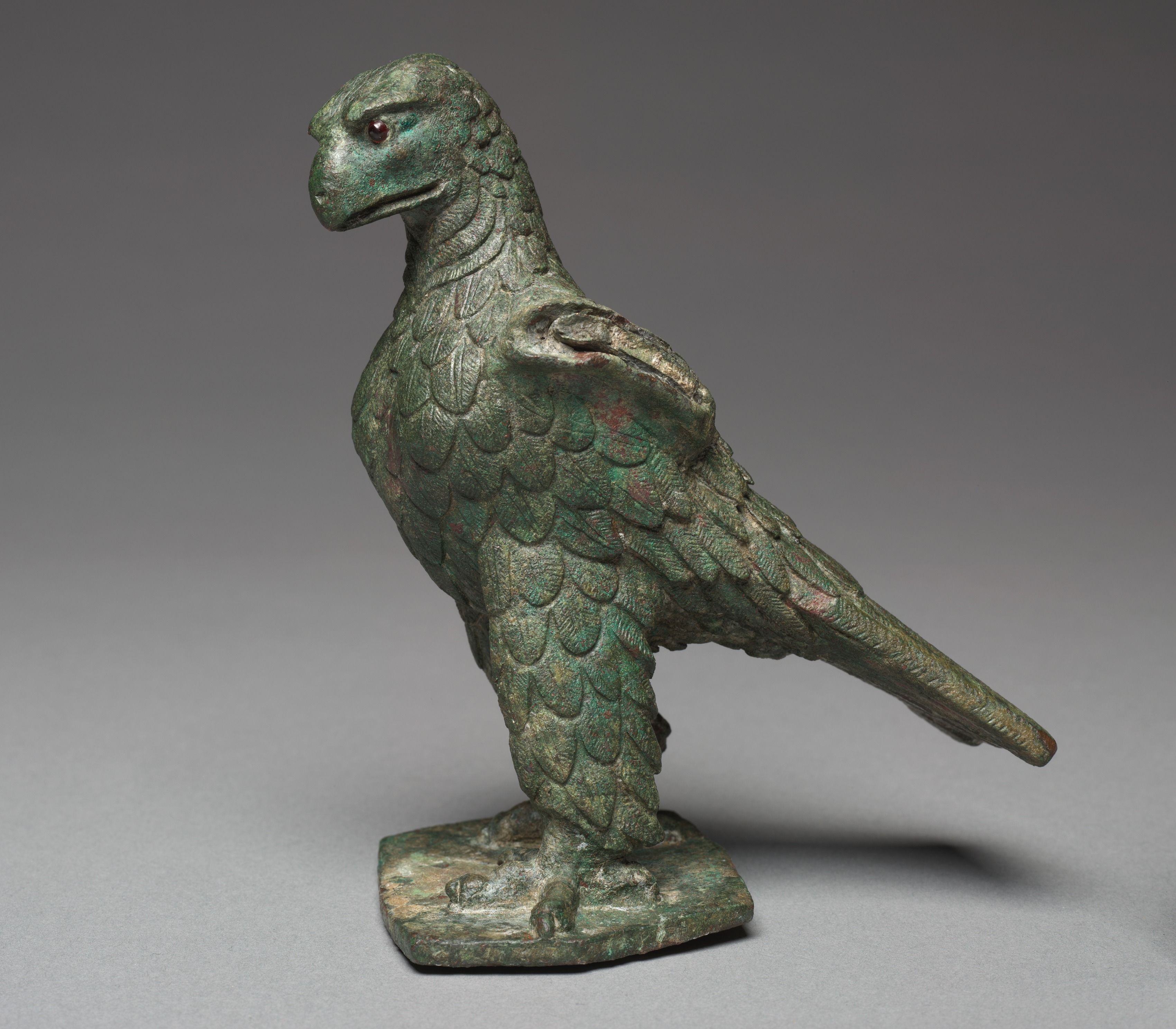The Cleveland Museum of Art
Collection Online as of April 25, 2024

Imperial Eagle
100 BCE–100 CE
Overall: 12.1 x 6.9 x 9.7 cm (4 3/4 x 2 11/16 x 3 13/16 in.)
John L. Severance Fund 1988.40
Location: 103 Roman
Did You Know?
The eagle was a symbol of the Roman Empire and its military.Description
This eagle stands on an integrated bronze base with overlapping ovoid-shaped feathers creating a layered pattern across its body, and its tail feathers fanned out. The wings, now lost, were likely cast separately in bronze and then soldered or welded to the bird’s body. The eyes are inlaid with red stones believed to be garnets. The eagle is associated with Jupiter, king of the gods, and the Roman poets Virgil and Horace described the birds as the bearers of his thunderbolt. While eagles were often depicted on Roman coins, the bird is rarely depicted in the round in Roman art.- -1988Robert Haber & Associates, New York, NY, sold to the Cleveland Museum of Art1988-The Cleveland Museum of Art, Cleveland, OH
- "The Year in Review for 1988." The Bulletin of the Cleveland Museum of Art 76, no. 2 (1989). p. 68, no. 8 www.jstor.org
- The Year in Review for 1988. The Cleveland Museum of Art, Cleveland, OH (organizer) (March 1-May 14, 1989).
- {{cite web|title=Imperial Eagle|url=false|author=|year=100 BCE–100 CE|access-date=25 April 2024|publisher=Cleveland Museum of Art}}
Source URL:
https://www.clevelandart.org/art/1988.40